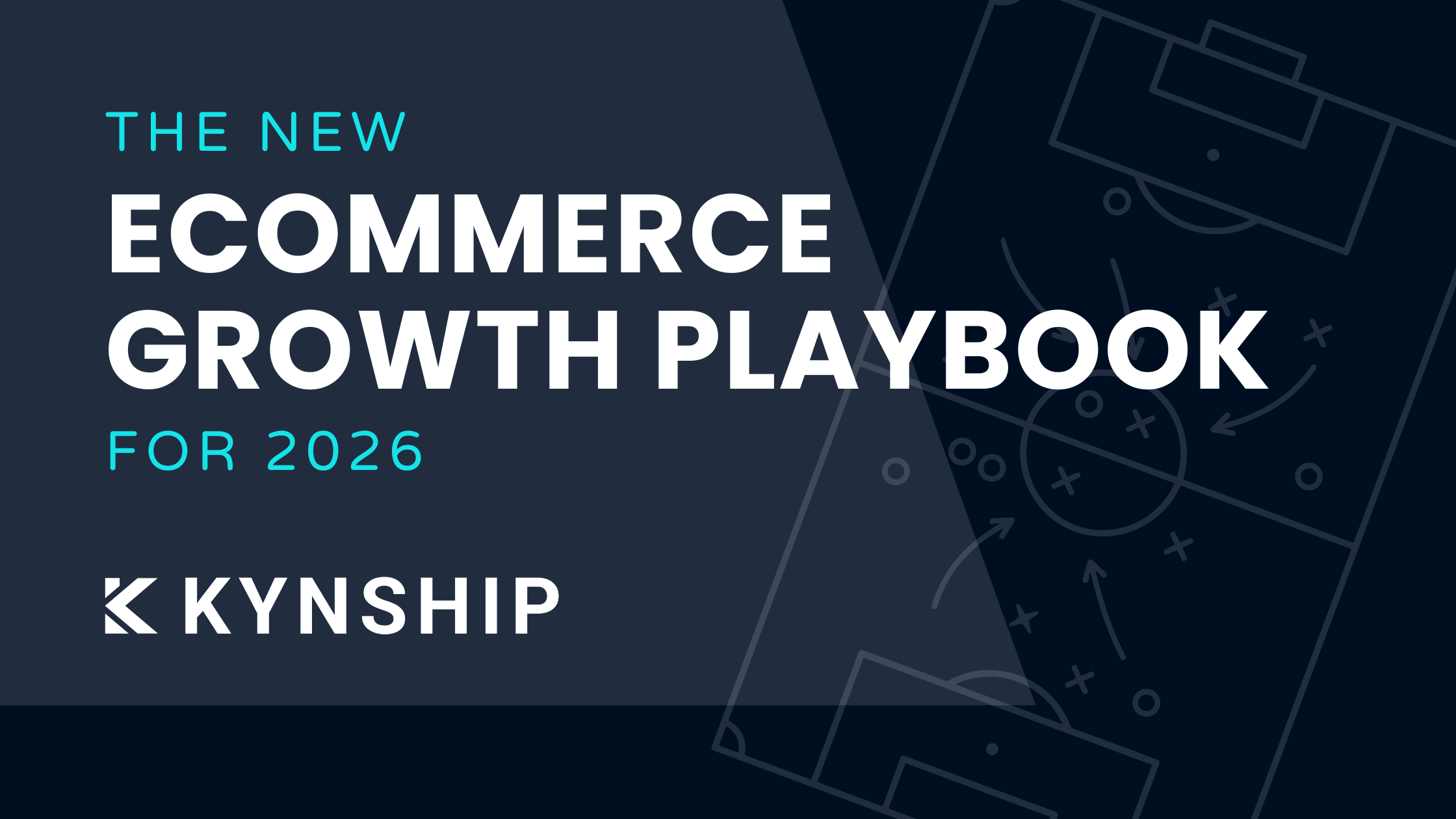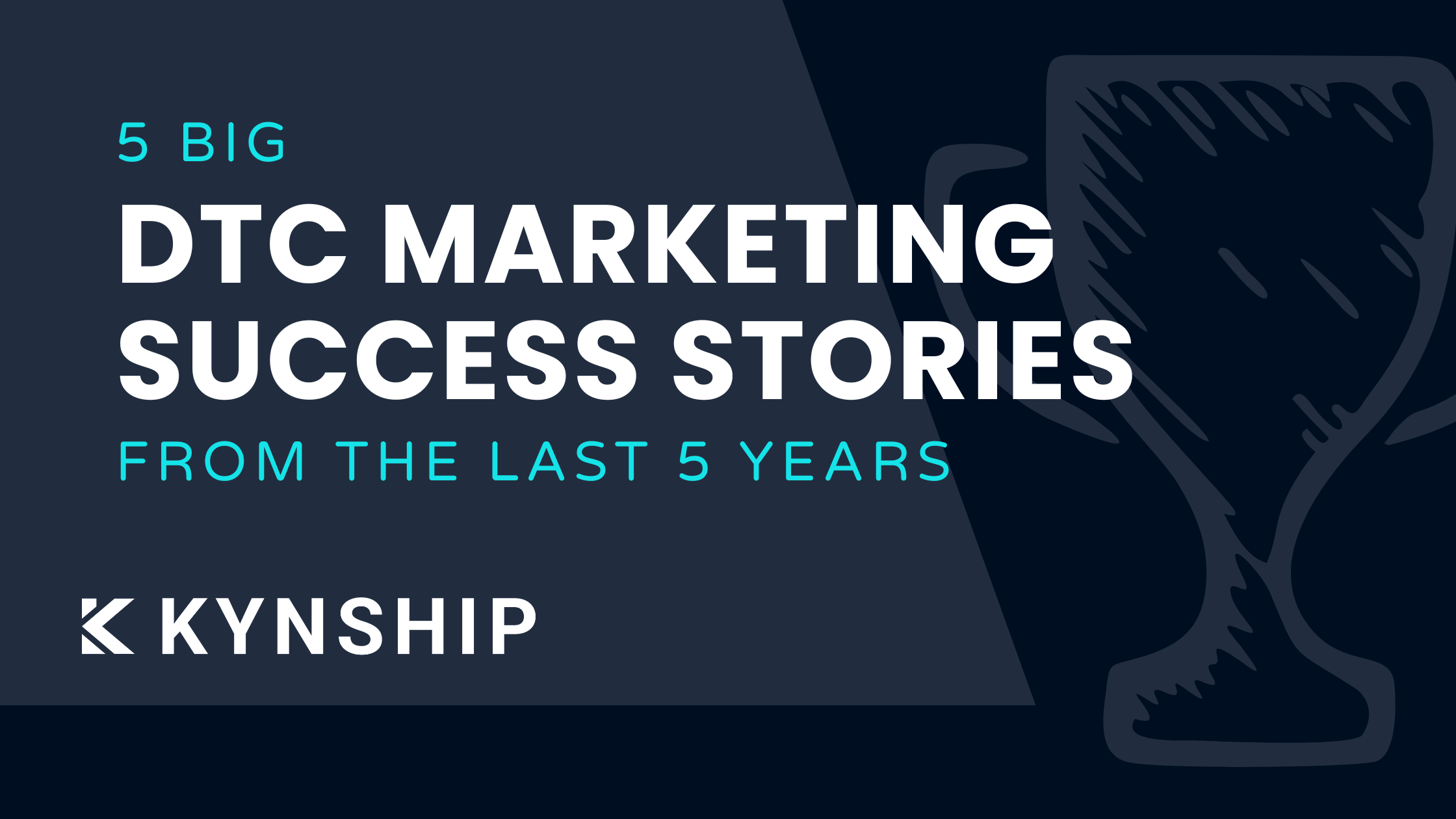Does B2B Influencer Marketing Work? Expert Advice for Brands Getting Started
.png)
A common question we’re asked at Kynship is whether influencer marketing works for B2B brands. Long story short: it absolutely does. You don’t need a physical product to be successful with B2B influencer marketing either.
This article will explain why it works and our advice for companies getting started. And for some extra sweetener, you’ll also hear from some other experts who have used B2B influencer marketing to grow their brands.
Here we go!
What Is B2B Influencer Marketing? (Is It Any Different to B2C?)
For the sake of clarity, let’s quickly define what we mean by B2B influencer marketing:
B2B influencer marketing involves engaging influential thought leaders within a specific industry or niche to spread a company's message to a highly targeted audience.
So, how is B2B influencer marketing different from B2C? Let’s hand the mic over to bestselling author and content agency owner over at Blogsmith, Maddy Osman:
“B2C influencing involves trying to influence consumers directly. B2B influencing involves trying to influence decision-makers—whether they hold the purse strings or not. This naturally involves tapping into different motivations and using different metrics to measure success.”— Maddy Osman, Founder, Blogsmith
Here’s an example of how goals may differ between the two:
- B2B influencer marketing campaign success = booked meetings (leads)
- B2C influencer marketing campaign success = sale
In both cases, the ultimate goal is generating leads and sales. While content marketing has typically taken the spotlight for B2B brands looking to generate leads—you should be thinking about how you can start involving influencers in this process.
Read more: What Does an Influencer Marketing Agency Do? All Your Questions Answered
Here’s Proof (From Successful Brands) B2B Influencer Marketing Works & How They Do It
Influencer marketing isn't only becoming a mainstream channel for growing DTC brands. A 2022 research report revealed 86% of B2B brands consider their influencer marketing to be successful. And 85% believe interest in working with influencers in the next 12 months will increase.

You might be wondering: what are these brands doing to be so successful? Let's discuss! Here are four B2B brands in completely different niches, have no physical product, and have used influencer marketing to help them grow.
1. Chubbiverse Attracted Major Influencers Within Their Niche To Grow Into a Multi-Million Dollar Brand
Chubbiverse is a community driven-brand that started its journey in NFT (non-fungible token). On a mission to spread giggles and rainbow farts—Founder String Nguyen said they have been able to grow rapidly by leveraging influencers and memes.
“With our 250 Chubbicorns, we attracted major influencers within our niche. DJ Steve Aoki, Crypto-influencer Path, and NFT artist PplPleasr are some of our holders. With a stable of core influencers, we were able to launch a bigger collection of NFT, 8888 Chubbiverse frens. We sold in 5-7 hours and generated about 3 million dollars of sales. We became a multi-million brand overnight.” — String Nguyen, Founder, Chubbiverse
Check out what they created with Steve Aoki:
String’s advice for leveraging B2B influencer marketing is to look at the following two communities you can tap into as a brand:
- Your biggest advocates inside your own company: They are your evangelists with strong ownership around the brand. But to support them, make sure you give them the tools to create attention and market for you.
- External circle of influence: These influencers have an audience aligned with your brand’s target market. Create a win-win partnership and don’t spam them. Instead, comment and engage with their content first before hitting their inbox. This breeds familiarity.
2. The Juice Is a Content Curation Platform (Literally) Built by Leveraging B2B Influencers & Collaborators
The Juice is a content curation platform that gathers the best B2B content from top brands and creators, then consolidates it onto a single, on-demand platform for B2B marketing and sales professionals.
Even our Co-founder Taylor Lagace is featured as a creator on the platform! Check this out, dropping some serious influencer marketing gold:

Brett McGrath, VP of Marketing at The Juice said it was apparent early on that there was an opportunity to elevate the voices of the most trusted creators in B2B marketing through their own content at The Juice.
Enter: their longest-lasting, most successful thing they’ve ever done … starting the Modern Day Marketer Podcast.

The Juice’s approach to influencer marketing is to make its guests look like a superhero every step of the way. They identify B2B influencers that always put their audience first, create kick-ass experiences, and are always looking for ways to give back.
“My mindset is to take the Jimmy Fallon approach. Build a platform, stand back, have fun, and facilitate conversations that will inspire from the most trusted voices in our space.” — Brett McGrath, VP Marketing, The Juice
So what’s the takeaway here? Establish trust with your guest and make them look like a superhero every step of the way. The more you make it about them and less about you, the more you elevate your brand.
3. Triple Whale’s B2B Influencer Marketing Success Story Is Underpinned by a Simple Philosophy (and Good Economics)
Triple Whale’s approach to influencer marketing is simple: partner with the best operators and people in the space. Then, understand the economics and make it a win-win situation for everyone.
Fortunately for Triple Whale, they have a robust business model to support going after ‘bigger’ influencers. But Triple Whale’s CMO Rabah Rahil explains that the economics still need to justify this.
“We take care in understanding the ROI and working with the influencer on longer time horizons or perhaps a flat fee + affiliate fee to boost their walk away money (aka increasing their monetary incentives). If the person is terrible to work with and wants a ton of money, we walk away (even if they have a massive following).” — Rabah Rahil, CMO, Triple Whale
Triple Whale’s most successful influencer marketing strategy has been partnering with successful Youtubers creating review videos talking about what they love about Triple Whale and how they leverage the platform to make more money.
Case in point: this review video by agency owner Justin Lalonde who has over 1000 subscribers.
Rabah’s key piece of advice: Think of Influencer Marketing as a mini-hiring scenario. You want to ensure their voice, vibe, and messaging is cohesive with your branding. And finally, keep an eye on the economics of the partnership—it has to be win-win to work in the long run.
4. Klaviyo Used Literal Cookies To Bring Awareness to—Well, Cookies! (Of the Digital Kind)
The biggest pushback Kynship gets from B2B SaaS companies on influencer seeding is that they don’t have a physical product to “seed” or send influencers. You just need to get creative, and seed influencers with something physical that represents what you're looking for them to promote.
Klaviyo showed how effective this strategy could be when applied to B2B marketing, even though seeding is most frequently associated with DTC brands.
Klaviyo, an email marketing platform, partnered with influencers for their “Less Stalking, More Talking” campaign. They worked with B2B influencers, like Eli Weiss, who have high authority in the ecommerce industry.

The campaign was focused entirely on cookies and data obtained from third parties.
As a result, Klaviyo's consumer advocacy team handed out some real cookies to the influencers. A picture-perfect illustration of what it was that Klaviyo wanted to bring attention to!
If you take this route with seeding physical product, reach out to the people who posted about it. Ask them:
- What type of impression this gift left on them?
- If they’d be more likely to recommend (your company) even more than before?
As we always say, seeding lends itself to genuine and authentic relationships with influencers, built on giving, not asking.
In the B2B context, this isn’t any different. You started the relationship the right way.
So, where to begin?
How To Create Your B2B Influencer Marketing Strategy
The biggest mistake B2B brands make when it comes to influencer marketing is not having a documented influencer strategy. In fact, 28% of businesses say they have an undocumented/informal strategy, and 25% say they have no strategy at all.
Take our word for it; you need a documented influencer marketing strategy.
It doesn’t matter if you’re B2B, B2C, or DTC—start by seeding products to influencers.
No product to send? Keep reading.
What Does Influencer Seeding Look Like for B2B Companies? (Using a Real Brand Example)
If you don’t have a physical item/product to send, here are the steps you need to follow:
Answer these questions to start:
- Who’s my customer?
- Who are the influencers in my industry?
- What physical item/goods could I send them that relates to what I do as a company?
Here’s a great example. Other Kynship co-founder Cody used Kitcaster as a booking agency for Podcasts.
Look what arrived on his doorstep. A colourful gift box as a “welcome to the community!”
Pretending to be Kitcaster, here’s how Cody would answer these questions:
- Who’s my customer? Me! Any entrepreneur at any stage of their business journey.
- Who are the influencers in my industry? It could be well-known entrepreneurs, brand owners, etc.
- What physical item/goods could I send them that relates to what I do as a company? Don’t just send them a shirt and coffee cup with your logo. That’s going in the trash.
"Podcasts are conversations. Kitcaster did an awesome job of tying everything back into that with the box. A BBQ with friends and family, where you could create cocktails, wear sunglasses, and celebrate good conversation (their mission statement). The shirt they sent me wasn’t a Kitcaster shirt, but one that said their mission in a unique, cool color." — Cody Wittick, Co-Founder, Kynship
Which Approach Will You Take for B2B Influencer Marketing?
To recap, I’ve shared five different B2B brands that don’t have a physical product. Yet, they all managed to get creative in how they worked with influencers.
One involves NFTs and digital artwork, two is a podcast, three includes video reviews, the fourth is a cookie box showing up on the doorstep, and the fifth is a giftbox with swag.
By now, I hope it's clear: influencer marketing B2B brands can be successful with influencer marketing. So, if you're thinking of diving into B2B influencer marketing—it doesn’t matter if you don’t have something to send.
Our recommendation is to send something physical that represents what you’re looking for the influencer to promote. I mean, who doesn’t love receiving a gift at their door step? It also leads to greater post rates as the influencer has something physical to include in the content they are creating and socially posting.
Hopefully, you’ve got some inspiration to think about your own approach. If not, schedule a chat with us, and we will happily brainstorm with you!


5 DTC Marketing Success Stories From The Last 5 Years
Five real DTC marketing success stories from the last five years, breaking down how brands scaled despite rising CAC, creative fatigue, and tougher competition, plus key lessons you can apply today.

The New Ecommerce Growth Playbook For 2026
These are the ecommerce growth marketing strategies we are using right now to successfully scale DTC brands from $2M to $50M.
Bi-weekly tips to reduce your CAC
Join thousands of DTC operators and subscribe to Cut the CAC for insights from the Bottom Line Podcast and Kynship's growth strategies.


.avif)
.avif)
.avif)



